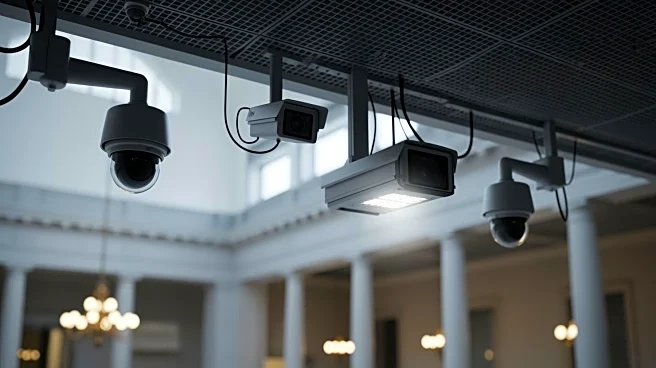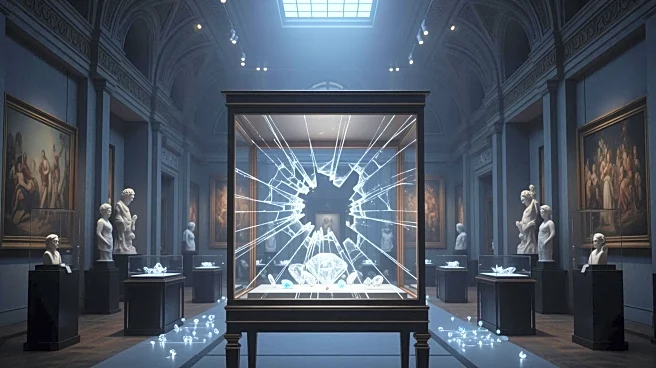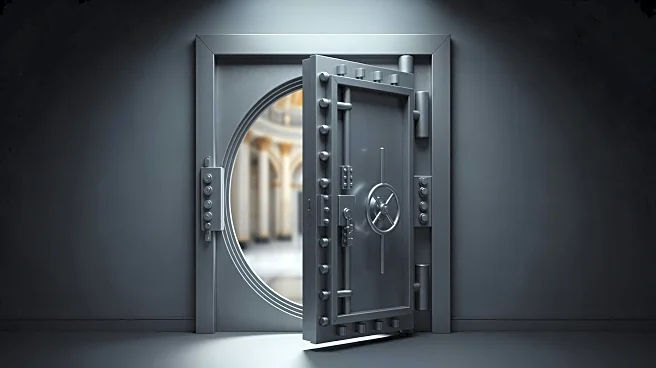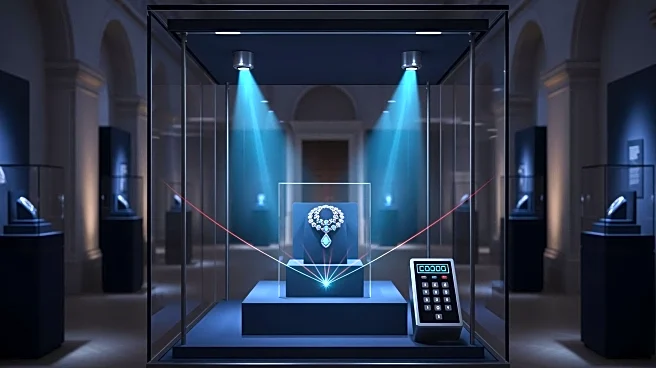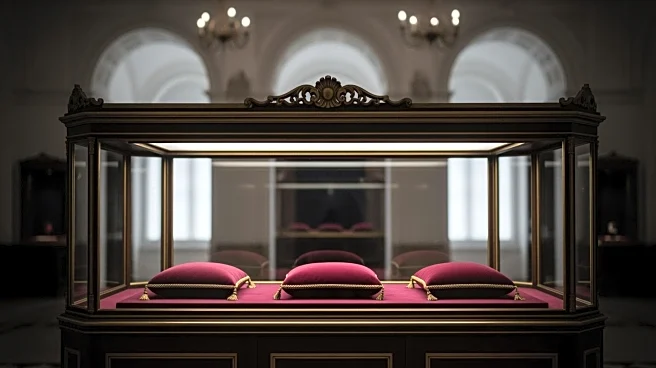What's Happening?
French detectives have uncovered evidence suggesting that the recent robbery at the Louvre Museum was an inside job. The heist involved four masked men who used a chainsaw to break into the museum and
steal eight pieces of France's crown jewels, valued at approximately $102 million. Investigators have found digital forensic evidence indicating that museum employees were in contact with the suspected thieves prior to the robbery. This included sensitive information about the museum's security being shared, which facilitated the breach. The robbers executed the theft in just seven minutes, using a crane to access a balcony and escape via a furniture elevator. Over 150 DNA samples have been collected from items left at the scene, and two suspects have been arrested, one at Charles de Gaulle Airport. The Louvre has since moved its most valuable jewels to the Bank of France for safekeeping.
Why It's Important?
The revelation of an inside job in the Louvre heist highlights significant security vulnerabilities within one of the world's most renowned museums. This incident underscores the need for enhanced security measures and protocols to protect cultural heritage and valuable artifacts. The involvement of museum staff in the heist raises concerns about internal security and the potential for insider threats in high-security environments. The theft of such high-value items also has implications for the art market and insurance industries, potentially leading to increased premiums and more stringent security requirements for museums globally. The arrests and ongoing investigation demonstrate the challenges law enforcement faces in addressing sophisticated art thefts, which often involve international networks.
What's Next?
The investigation into the Louvre heist is ongoing, with French authorities continuing to search for the remaining suspects and the stolen jewels. The arrests made so far may lead to further breakthroughs in the case, as investigators work to dismantle the network involved in the theft. The museum is likely to review and upgrade its security systems to prevent future incidents, potentially setting a precedent for other institutions to follow. The case may also prompt discussions on the need for better employee vetting and monitoring to prevent insider threats. As the investigation progresses, the recovery of the stolen jewels remains a priority for French authorities.
Beyond the Headlines
The Louvre heist raises broader questions about the security of cultural institutions and the ethical responsibilities of employees in safeguarding national treasures. The incident may lead to increased scrutiny of museum security practices and the development of new technologies to prevent similar thefts. Additionally, the case highlights the global nature of art crime and the need for international cooperation in addressing such issues. The involvement of museum staff in the heist also points to potential socio-economic factors that may drive individuals to participate in criminal activities, prompting discussions on employee welfare and support systems.
